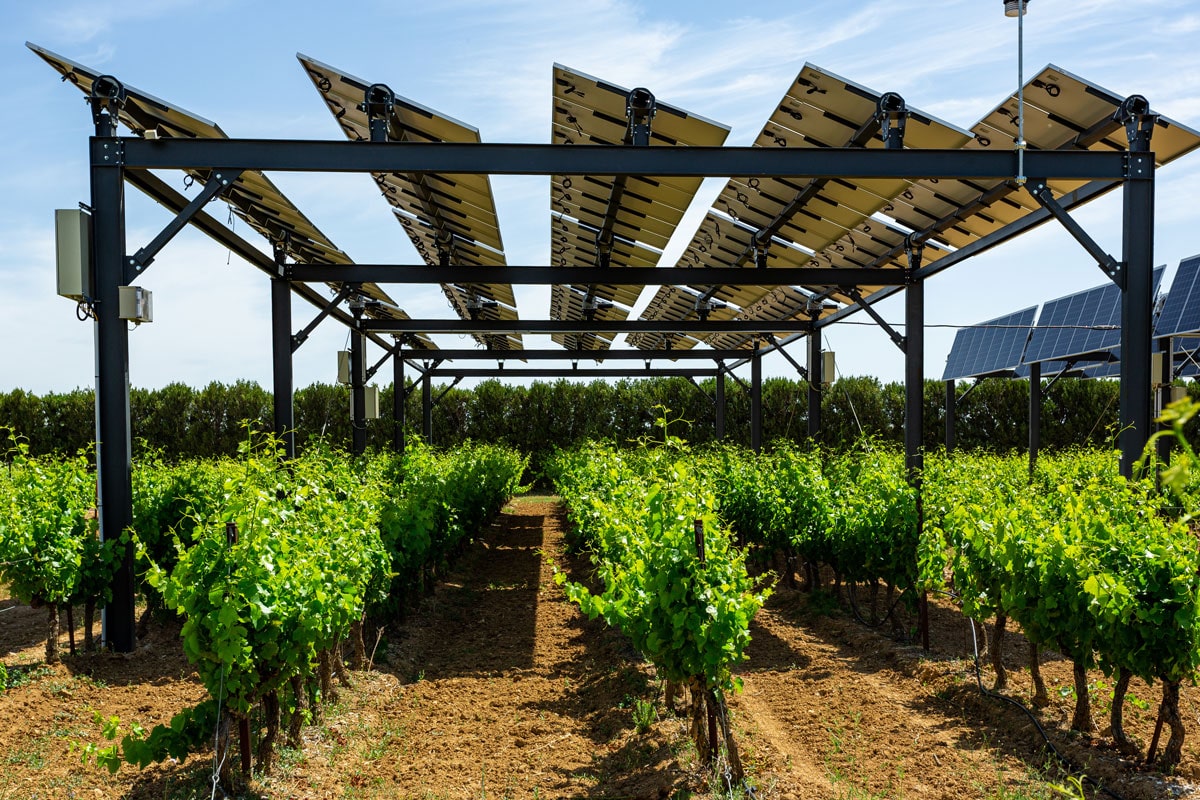Key findings
Vine growing

- Limiting excess solar radiation and high temperatures: in hot weather, controlled shading can reduce the temperature of vines under DAV by up to 5°C, while the improved nitrogen levels in the leaves lead to a denser canopy.
- Reducing the risk of frost: with an average temperature difference of +2°C when the thermometer is approaching 0°C, the DAV thermal blanket protects the plants against harmful spring frost during bud burst.
- Reducing water stress while limiting irrigation, as measured by a plant growth period that is up to 14 days longer than on the control plot, and a 40% reduction in potential evapotranspiration (PE). It was also possible to adapt the irrigation schedule by starting the water supply later in the season and reducing the amount of water used by up to 34%.
- Contributing to a better aromatic balance of the wine produced: the grapes produced under DAV contain more anthocyanins (up by 10% to 15%), have a sugar content that is 2° to 3° degrees Brix lower on any given day (as they ripen during a cooler period), and are up to 15% more acidic than those produced on control plots.
- Combining multiple protection solutions, e.g. against rain and hail, by making it possible to install nets at lower costs.
The experimental data presented above have been generated and validated by the Sun’Agri 3 consortium, which includes six INRAE departments (LEPSE, PSH, SYSTEM, PECH ROUGE, G-EAU, MISTEA), as well as ITK and Sun’Agri. The development of the Sun’Agri solution started with the initial research programme in 2009 (Sun’Agri 1, at TRL 4), which then evolved through two further R&D programmes into Sun’Agri 3 (TRL 8), and finally into the current large-scale industrialisation and demonstration phase (TRL9).
Vine growing is the first agricultural sector to benefit from our dynamic agrivoltaics (DAV) solution on a larger scale. Experimental data on vines under panels of different sizes were collected in 2018 and 2019 on the campus of Montpellier SupAgro, complemented by a series of experiments that INRAE has conducted on a fixed installation at Pech Rouge since 2016. In 2018, young vines were planted on 7.5 hectares of the Domaine de Nidolères (Tresserre). The first DAV demonstration system was then constructed on a 4.5-hectare plot, with agronomic monitoring performed by the Chamber of Agriculture of the Pyrénées-Orientales department. In 2019, an additional experimental system was set up in Piolenc (on Grenache vines planted in 2000) whose extensive results are now being analysed by the Vaucluse Chamber of Agriculture (CA84) and INRAE.
